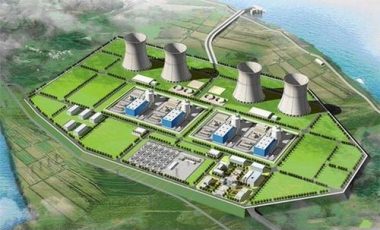Chinese planners are moving ahead with three new nuclear power plants based on AP1000 reactors - the first to be developed after technology transfer from Westinghouse.
The US-based reactor vendor is already constructing pairs of AP1000 reactors in China China
The sites are Xian'ning, Hubei Hunan Jiangxi
A further wave of AP1000 build will include at least one other pair of units at each of the above sites, while up to six new locations are already pencilled in for AP1000 development.
Each of the latest sites is to be led by a different Chinese firm: Xian'ning by China Guangdong Nuclear Company; Taohuajing by China National Nuclear Company; and Pengze by China Power Investment Corporation. Transferral of the AP1000 technology is being carried out by State Nuclear Power Technology Corporation, which will now take the engineering lead on new AP1000s.
Nuclear production line
Having developed its own reactors and imported a wide range of units from international vendors, China
According to plans, fleets of these reactors will be constructed with exponential speed for China China
Successive CPR-1000 projects have featured increasing amounts of local engineering and now around 90% of plant components are sourced from Chinese firms. The AP1000 features modular construction and China has quickly set up specialised nuclear facilities to produce the very large modules - effectively creating a production line for nuclear power plants.



Tidak ada komentar:
Posting Komentar